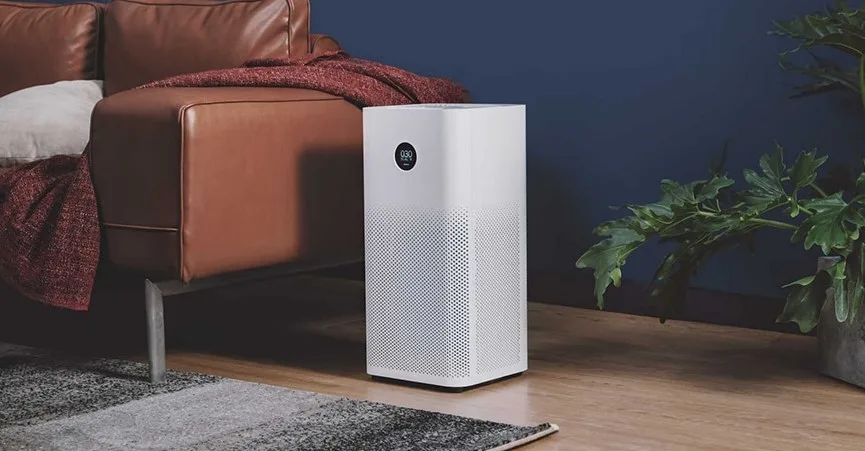Many air purifiers have multi-functioning fans that double as heaters and humidifiers. Some have a smart feature that allows you to monitor your home’s air quality from afar and connect with voice assistants.

Before you start shopping, be clear on what you want your air purifier to do for you. Then, consider these key factors:
The size of an air purifier is important because it affects its performance in a given space. If an air purifier is too small for a room, it will need help to clean the entire area. Conversely, if an air purifier is too large for a room, it will save energy and may produce more noise than necessary.
An ideal way to determine the size of an air purifier is by calculating the room’s square footage. This can be done by multiplying the length and width of a room. Then, look for an air purifier like the ones at Dyson with a CADR rating of approximately two-thirds of the room’s square footage.
Another thing to remember when calculating a room’s square footage is that ceiling height can significantly increase the amount of air that needs to be moved through the filter. This is why it’s important to consider the room’s square footage and ceiling height when choosing an air purifier.
Air purifiers come in various sizes, each designed to accommodate different amounts of space. To guarantee that your air purifier can effectively remove all kinds of airborne pollutants, from bigger particles to the smallest microns, choose one certified for the size of your room. For example, a HEPA air purifier can capture up to 99.9% of microscopic airborne allergens by negatively charging them with an ionizer and attracting them to a filter or plate on the unit.
Choosing an air purifier that harmonizes optimal noise levels with energy efficiency requires a multi-step process of understanding your sound tolerance and evaluating the unique context of your space. For instance, an air purifier that produces a buzzing sound in an office may be fine but may be disruptive to the tranquility of your bedroom at night. Moreover, the volume of the noise produced by an air purifier varies with its fan speed settings.
Generally, most models operate at low-level noise, less than 50 decibels (about the volume of a whisper). These units will blend in with regular ambient background noise and won’t disrupt your daily activities. Some units even have a “sleep mode” setting that increases the noise level to promote sleep quality.
Additionally, some of these units are certified for energy efficiency and have clear labels that display their energy appetite. As energy costs continue to increase due to new ventilation recommendations post-COVID-19, selecting an energy-efficient model can lighten the load on your electricity bill while contributing to a sustainable future. In addition, some units have a smart feature that matches fan speed with the concentration of pollutants to reduce energy usage over time. The result is fresh, filtered air without any additional environmental cost.
Air purifiers require a certain amount of energy to operate. However, the type and quality of filters can directly impact how much electricity is used to run the unit. For example, HEPA filters tend to consume more power than other types. Similarly, air purifiers with washable and reusable filters typically reduce long-term operating costs while improving energy efficiency.
An air purifier’s physical size and capacity also affect its energy consumption. An oversized model may consume more electricity than necessary, while an undersized model may struggle to meet the room’s air quality requirements. How long an air purifier runs and its usage patterns influence energy efficiency. Larger units with greater capacities generally require longer run times and may use more electricity than smaller models.
Striking a balance between optimal noise levels and energy efficiency can be challenging, but finding an air purifier that meets both criteria is possible. The key is understanding your preferences and needs and choosing an air purifier that meets these demands. For example, a noisy and highly energy-efficient unit might be acceptable in an office environment, while a quieter but less efficient model could be better suited to a bedroom. In addition, it is important to place the air purifier strategically so that it can effectively draw and push air without being obstructed by furniture or other objects.
Air cleaners use fans to draw air into filters that contain multiple layers of finely woven fibers. The larger particles are captured by impaction (crash into the fibers), and the smaller particles are caught through interception (the particle’s zig-zagging across the filter causes it to hit and stick to a fiber). Most models are certified as HEPA by the Environmental Protection Agency, meaning they remove 99.95% of particles 0.3 microns in size or larger.
The most effective models are those with a high CADR for smoke or pollen, which indicates how much clean air they can recirculate per hour, and those with the highest MERV rating, meaning that the filters are tightly bound so that very small particles (such as viruses) are not released into the room. It’s important to read the fine print and research manufacturers’ claims independently, as sales representatives may be biased.
Numerous studies have demonstrated that by lowering the concentration of indoor allergens such as pet hair, mold spores, dust mite droppings, and unintentional cockroach infestations, air purifiers assist in lessening allergy and asthma symptoms. They won’t, however, be able to catch radon or volatile organic compounds (VOCs), which can build up from paints, adhesives, and solvents. An absorbent, such as activated carbon, is needed for this. Installing, location, and other elements in your house might also impact performance.